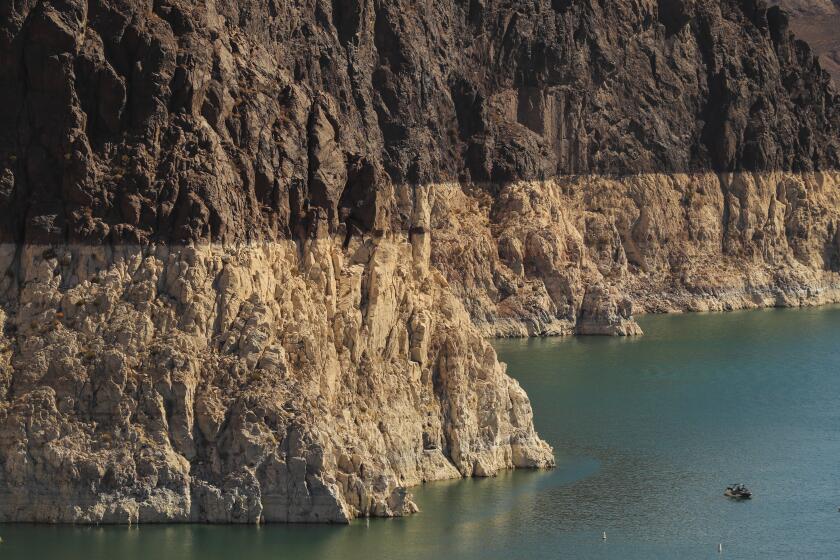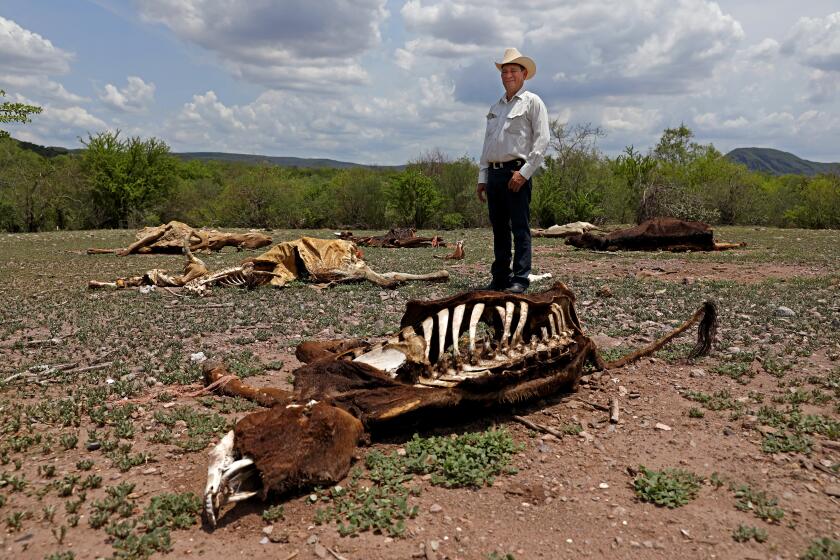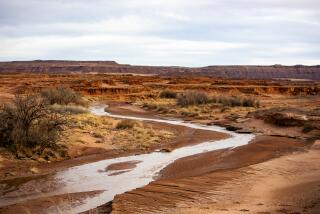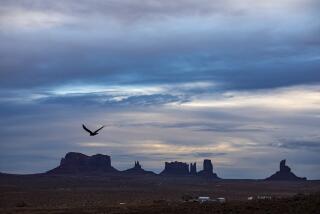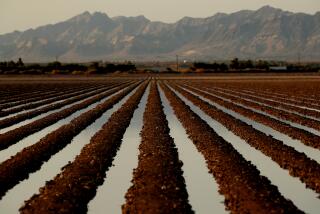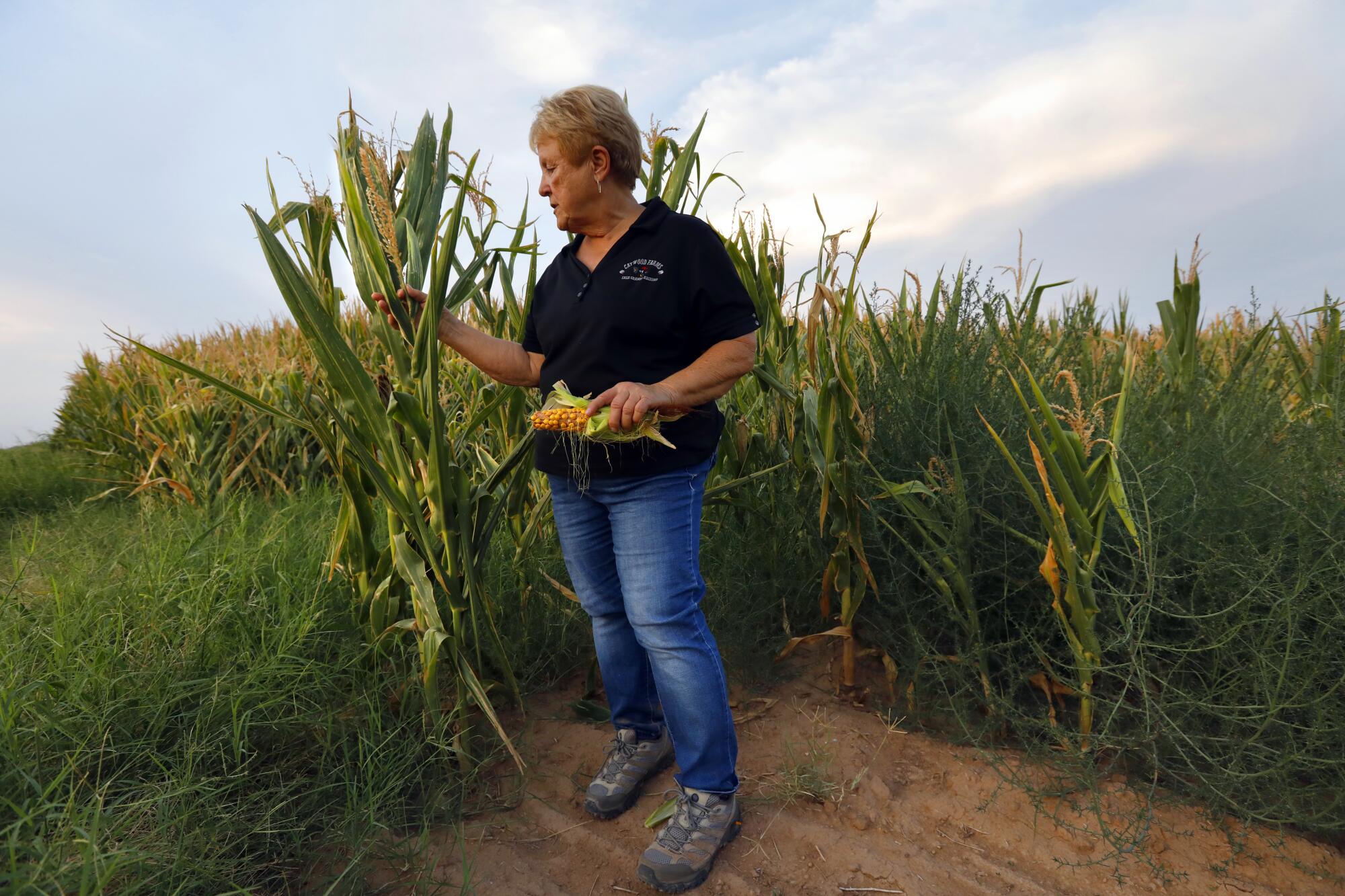
- Share via
CASA GRANDE, Ariz. — The cotton’s gone.
The alfalfa barely exists.
“Can you even call this a farm?” asked Nancy Caywood, standing on a rural stretch of land her Texas grandfather settled nearly a century ago, drawn by cheap prices and feats of engineering that brought water from afar to irrigate central Arizona’s arid soil.
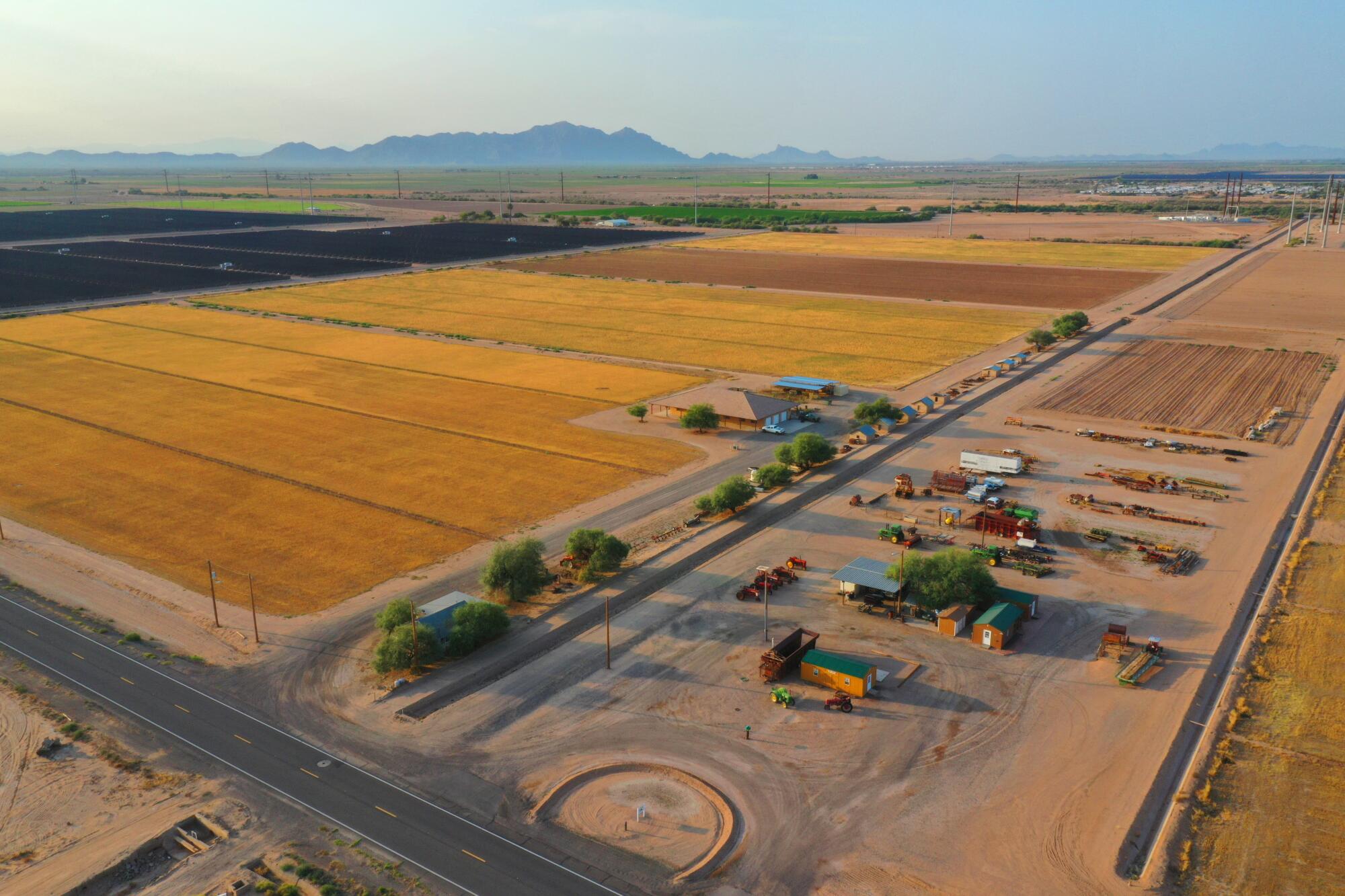
On the family’s 247 acres an hour south of Phoenix, Caywood grew up tending to cotton and alfalfa, two water-intensive crops that fed off melted mountain snows flowing from a reservoir 120 miles away. She grew up understanding the rhythms of the desert and how fields can blossom despite a rugged, sand-swept terrain where sunlight is a given but water is precious.
Now more than ever. Looking out at her farmland recently, Caywood held back tears.
Lake Mead is at the lowest water levels in its 85-year history. Federal officials who manage the lake expect to soon declare a water shortage.
The eastern Arizona reservoir that provided much of her water was drying up, leaving empty the canals and ditches that surround her property. Bigger-than-usual summer rains did not prove ample to rescue dead fields. The drought was at her door.
Across the U.S. West, shifting climate patterns are wreaking havoc. An early start to fire season is scorching rural Oregon and parts of Northern California. Record temperatures have led to deaths of hundreds of residents of Seattle and Portland, Ore. Lake Mead, the massive Colorado River reservoir outside Las Vegas, is at its lowest point since its 1935 federal construction, threatening water supplies to Arizona, Southern California, Nevada and Mexico.
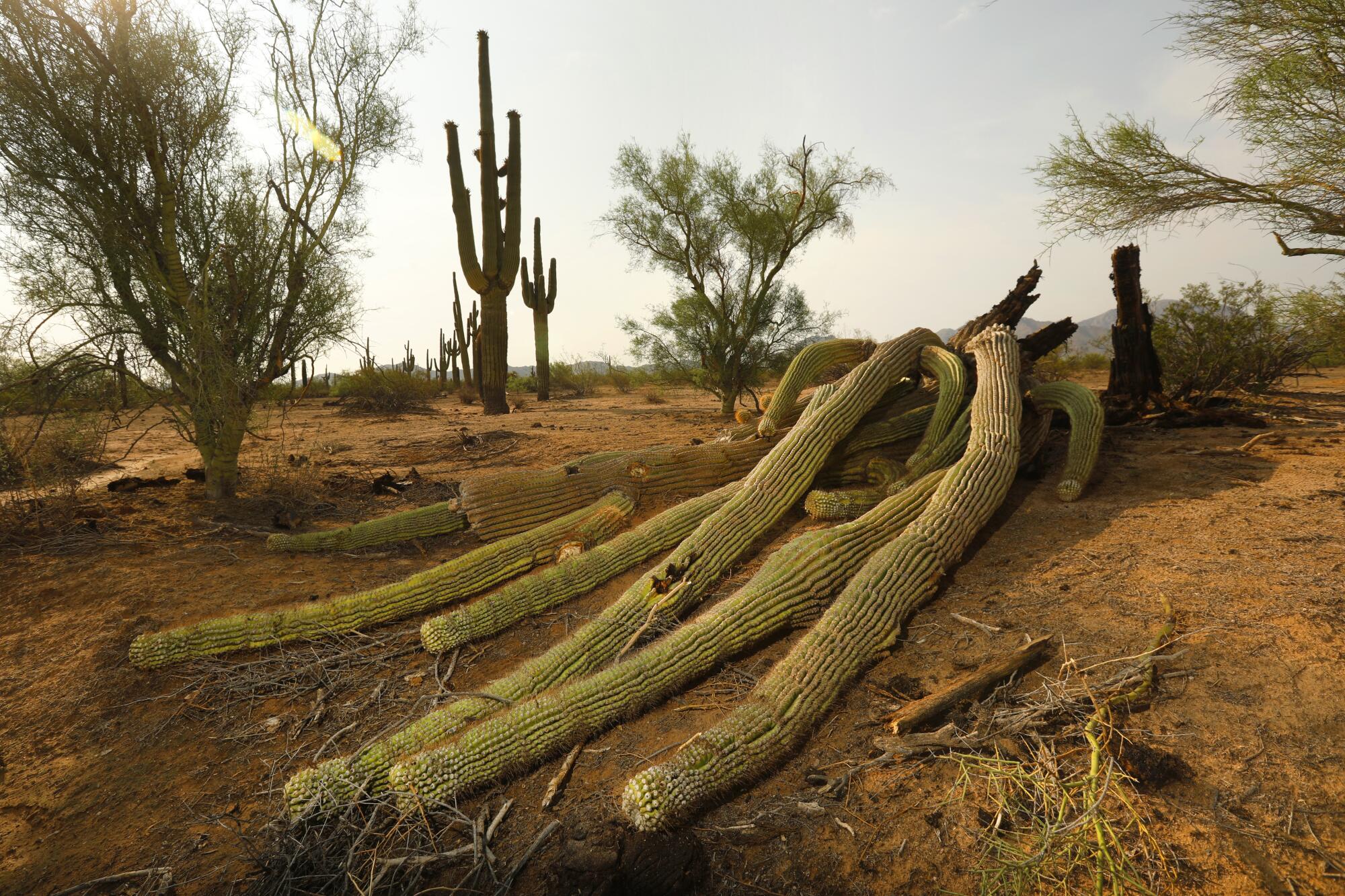
In Arizona, 99% of the land is undergoing years-long drought that has accelerated. Large swaths of the region are now in extreme distress and the picture may well get worse, with less reliable mountain snowfall to feed streams and a morphing monsoon season that has only proved a temporary reprieve and even led to flooding. The state, where more than a third of all water can trace itself up the Colorado River to Lake Mead, will also be forced to make do with less beginning next year because of the lake’s dwindling supply.
“Arizona is pretty much an irrigated state and we’ve managed our water resources generally well,” said Stephanie Smallhouse, a fifth-generation cattle rancher on the far outskirts of Tucson who is the president of the Arizona Farm Bureau. “But it’s near impossible to manage yourself out of a drought.”
The history of Arizona is the history of water. Before European colonizers and American settlers moved in, Indigenous people relied on the Gila, Salt and Verde rivers outside Phoenix. The Colorado River flowed on what’s now the state’s western edge, while snowmelt from New Mexico’s Black Mountain Range formed the Gila River that came from the east to meet the Colorado, creating a lifeline for tens of thousands of subsistence farmers in Native American communities.
But as technological advances led to the construction of dams and reservoirs in the early 20th century to divert rivers for new residents — like Caywood’s grandfather — Native land went fallow, leading to sickness and poverty. As cities such as Tucson and Phoenix and farmlands between them grew over the decades, they were aided by another feat in water engineering when construction on the Central Arizona Project launched in 1973. Today, the intricate canal system carries Colorado River water hundreds of miles from Lake Havasu on the California-Arizona border to taps and irrigation ditches across central Arizona.
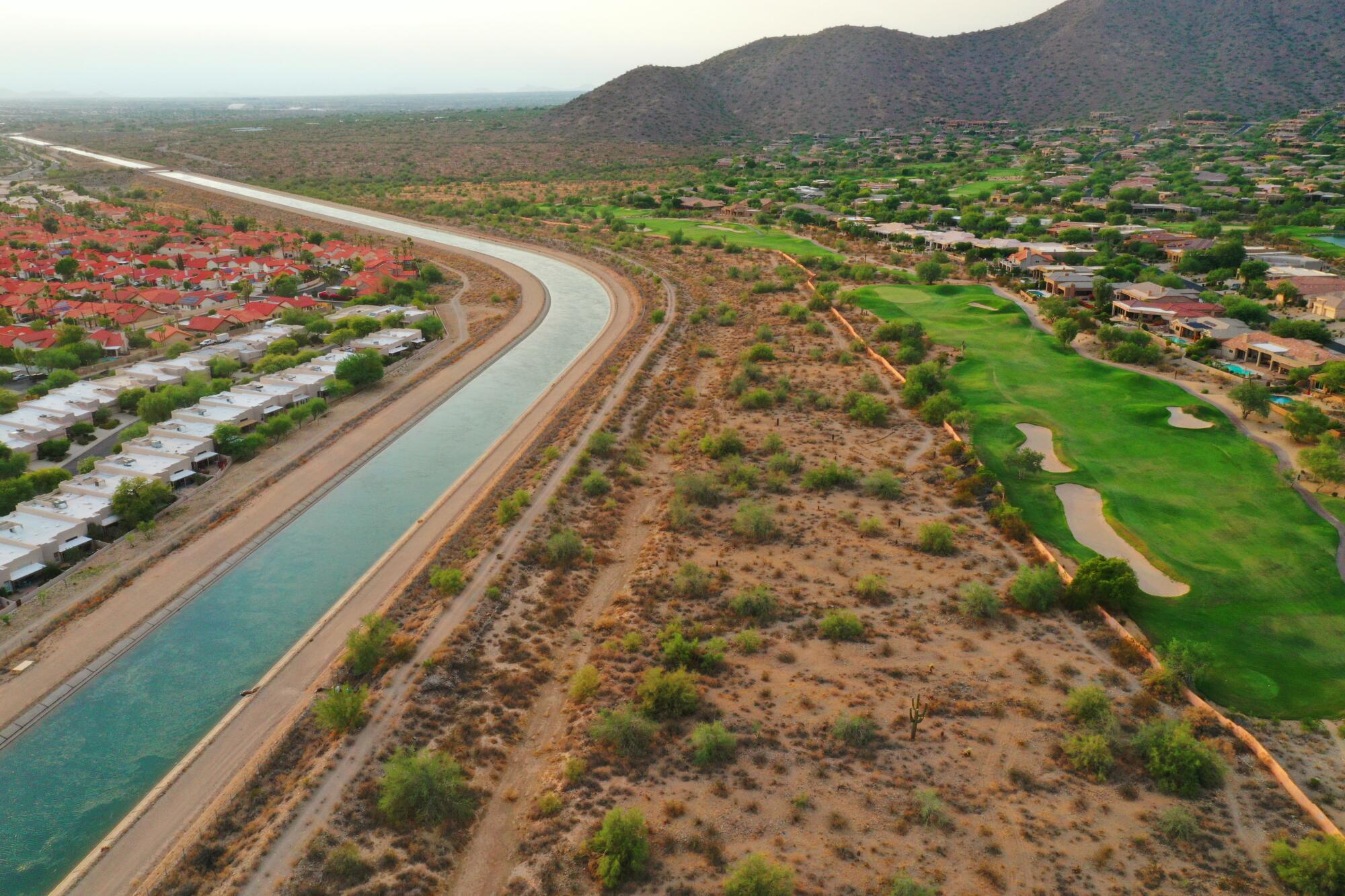
It’s a history that informs who wins and loses amid drought. The state has dozens of irrigation districts that tax customers in exchange for regulating water flow from different sources. The map they form can at times resemble gerrymandered congressional districts, with it not unusual for neighboring farms to get water from canals that lead to mountains and reservoirs in opposite directions.
Longevity also goes into the equation.
“Water policy in Arizona is also rooted in the idea that a person who comes and diverts water for a beneficial use should have higher priority than the next one who comes along if there is a risk for shortage,” said Sarah Porter, the director of the Kyl Center for Water Policy at Arizona State University.
When it comes to water, one city or farm is not always equal to the other in the state where the $23-billion agriculture industry uses up more than 70% of irrigated water, a large chunk of it on crops the federal government encourages with subsidies, such as cotton. In central Arizona, city dwellers and tribal lands tend to get first dibs on water before farms. Still, nearly everyone is preparing. Cities are raising water prices. The state is locked in a battle with hundreds of lush golf courses over demands that they cut back on water.
Yuma, a major farming region known as the “Salad Bowl” for growing broccoli, lettuce and leafy greens that are shipped across the country each winter, is in many ways spared. It has priority over water from the nearby Colorado River in part because irrigated agriculture has taken place there for more than a century. Vegetables also need significantly less water than crops that are popular inland.
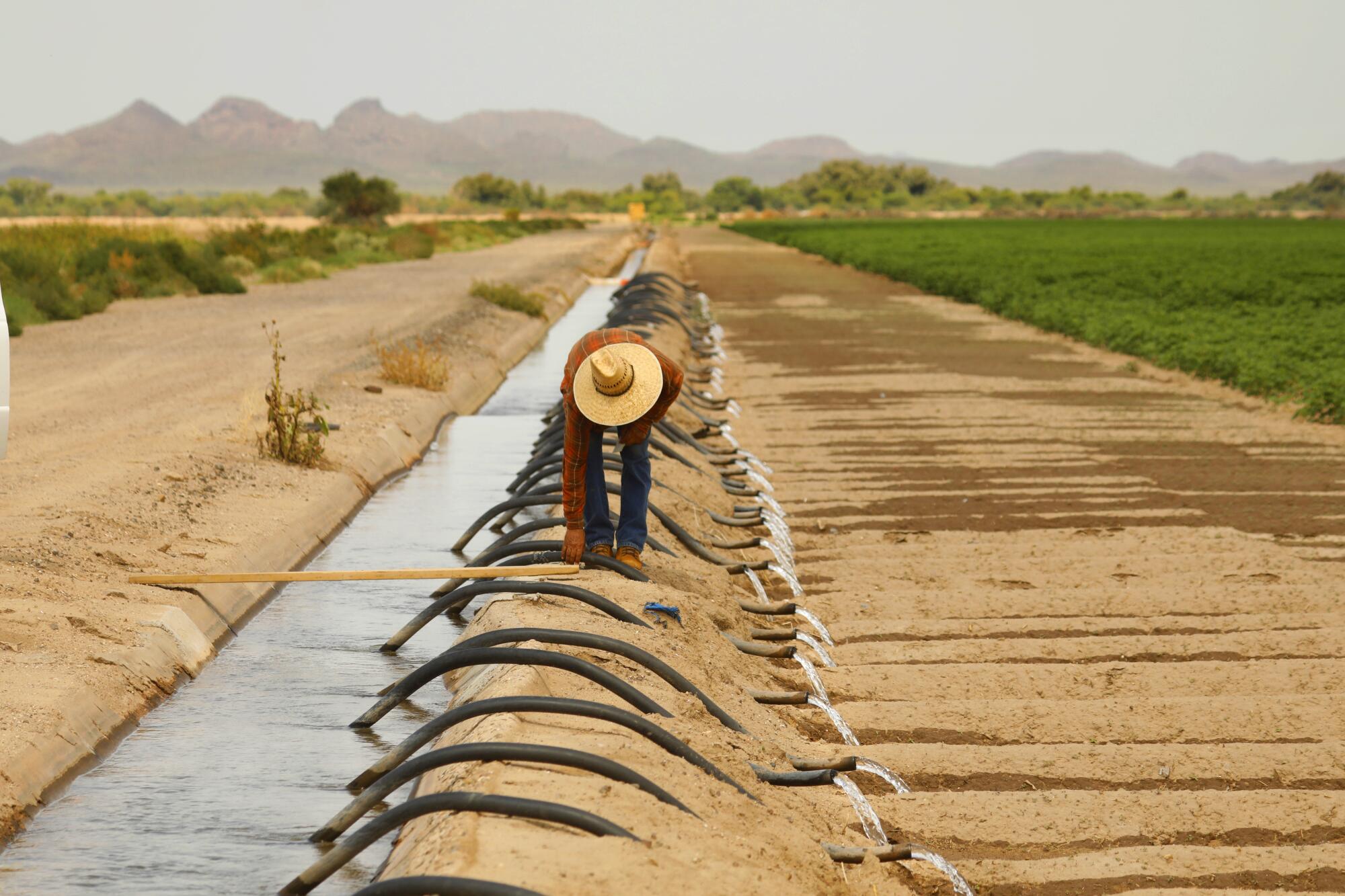
It’s farmers in the center of the state who are most worried as shortages loom. Among the hardest-hit are those in Pinal County, a largely rural patchwork of farms and cattle and dairy ranches nestled between Phoenix and Tucson where family farmers live alongside exurbs that are rapidly expanding as agriculture recedes.
Along Interstate 10, typically green farms have turned brown, skinny cattle are left with little grass to graze and saguaros lie dead. “For sale” signs advertise desperate owners looking to sell their land at discount for solar power panels and housing developments.
“There’s nothing nefarious about how the water is divided,” said Paul Orme, an attorney who represents several irrigation districts in the county. “But because of agreements that have been negotiated and where these farmers have fell in those, you could see up to 30% of farmland in Pinal County no longer irrigated over the next few years.”
Support our journalism
Your support helps us deliver the news that matters most. Subscribe to the Los Angeles Times.
For those like Caywood, that time has already come.
Casa Grande, a city of 55,000 founded in 1879 as a mining town that’s named after a structure built by the ancient Hohokam people, is one of those places at the center of the water crisis. Home to dozens of alfalfa, cotton, wheat and corn farms and as well as dairy and beef ranches, it’s long been sustained by a mix of rains, aquifers and canals drawing on the Colorado River, among other reserves.
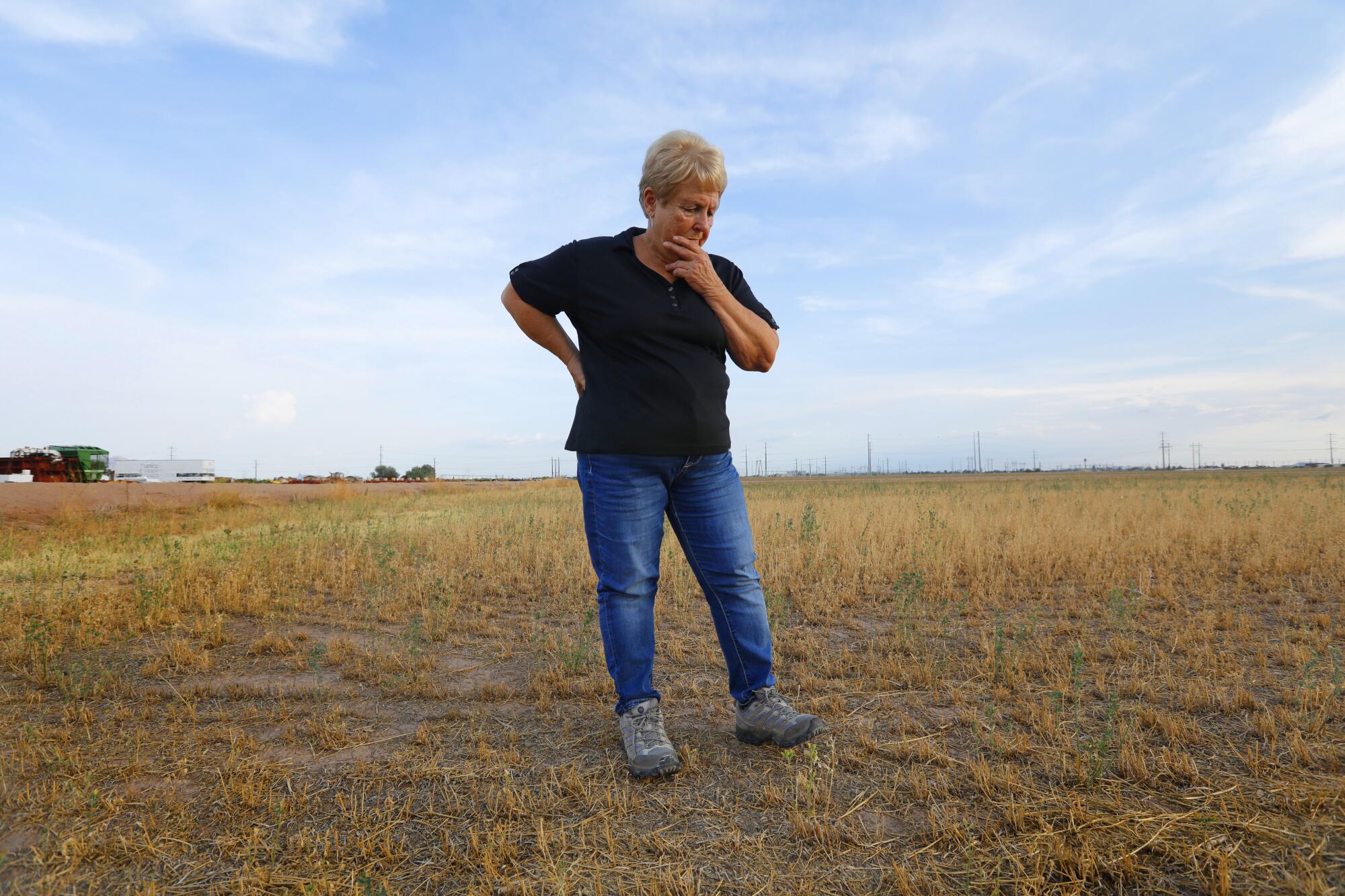
The Caywood farm has a different source. When Caywood’s grandfather, Lewis Storey, established it in 1930, he agreed to pay for water from canals connected to the San Carlos reservoir 130 miles away. Storey thought the reservoir, formed on the Gila River, would be plentiful for generations with its 1.2 million acre-feet supply. An acre-foot covers the amount of water that could seep a foot deep across a football field.
The family had long used that water to grow cotton that made up towels and sheets found in big-box stores. The seeds went separately for cattle feed. Alfalfa was cut and baled for ranches across the Southwest.
Sonora is the cattle capital of Mexico. But prolonged drought is killing off the herds.
This summer, the San Carlos reservoir hit zero acre-feet.
“If you want to eat ice cream, you need people like us growing the feed,” Caywood said recently as she sat in the small, wooden shed on the property where she keeps a digital slideshow of the once-lively green and white fields to show kids who still come by on field trips. All that survived now were old mesquite and cottonwood trees on the edges of the land.
“We’re wiped clean,” Caywood said. “You can’t grow.”
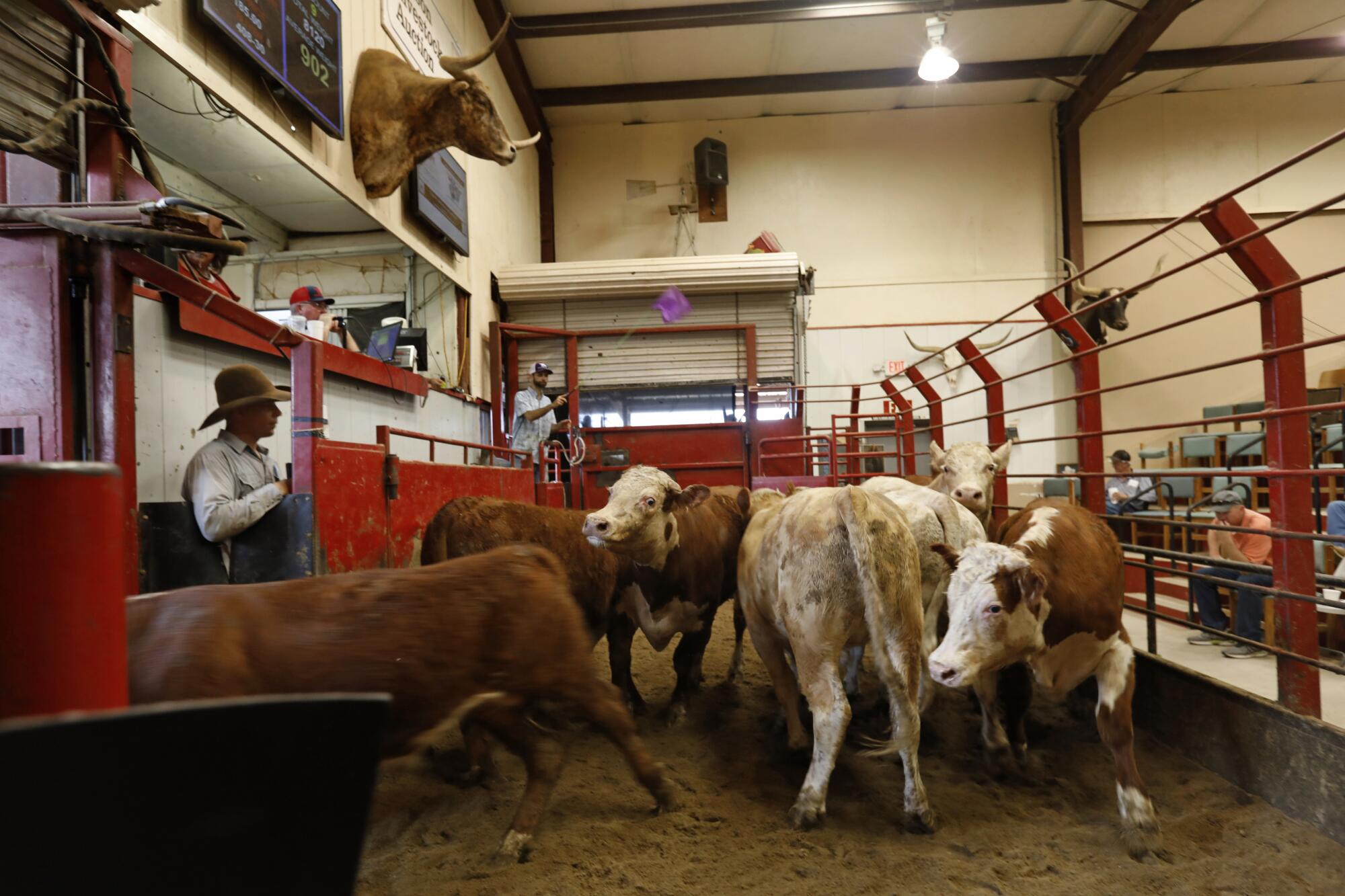
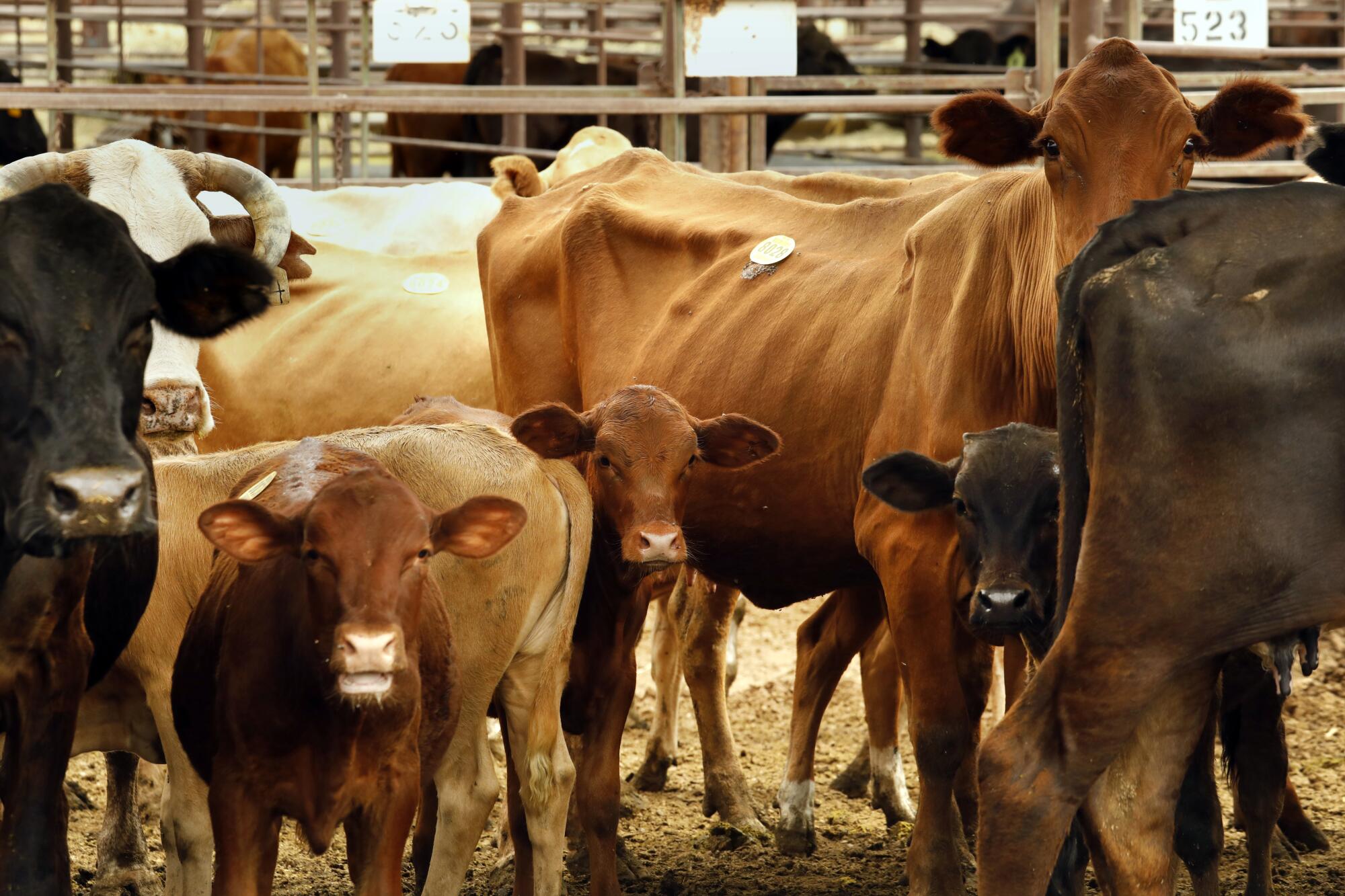
An hour south of the the Caywood property at the Pinal County line, the ranchers who show up each week at Marana Stockyards are feeling the trickle-down effects of the drought. The Parsons family has auctioned cattle here for 25 years. Business is picking up.
Dozens of men in cowboy hats and leather boots arrive each Wednesday to watch their bulls, cows and calves sold off. Clay Buck Parsons, a third-generation rancher and auctioneer, ushers cattle into holding pens outside the red barnyard-like building while Parsons’ dad mans a computer as locals in the stands make bids and buyers log in online.
“We’ve sold 12,000 more head this year already than last year,” said Parsons, 29. Most go to Texas, Kansas and Oklahoma.
“You can’t feed the animals without grass,” he said, looking out at dozens of black Angus mother cows whose shoulders and ribs jutted out from grazing on dying fields.
“If you can’t grow grass, you buy it. But the hay is too expensive because there’s less water to grow it and less water expected down the line. So the ranchers are cutting down on their herd to maintain smaller numbers where they can still make a profit.”
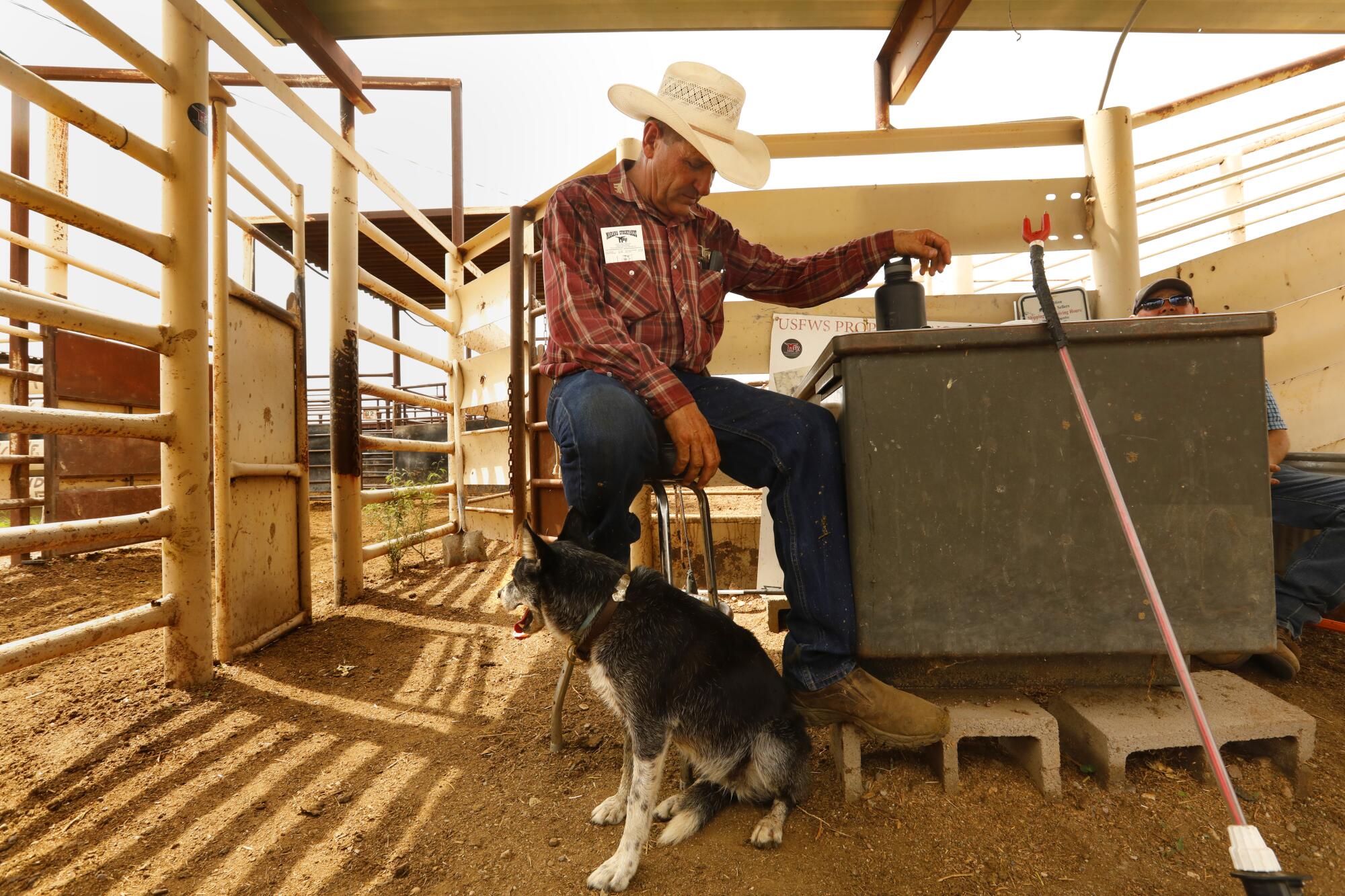
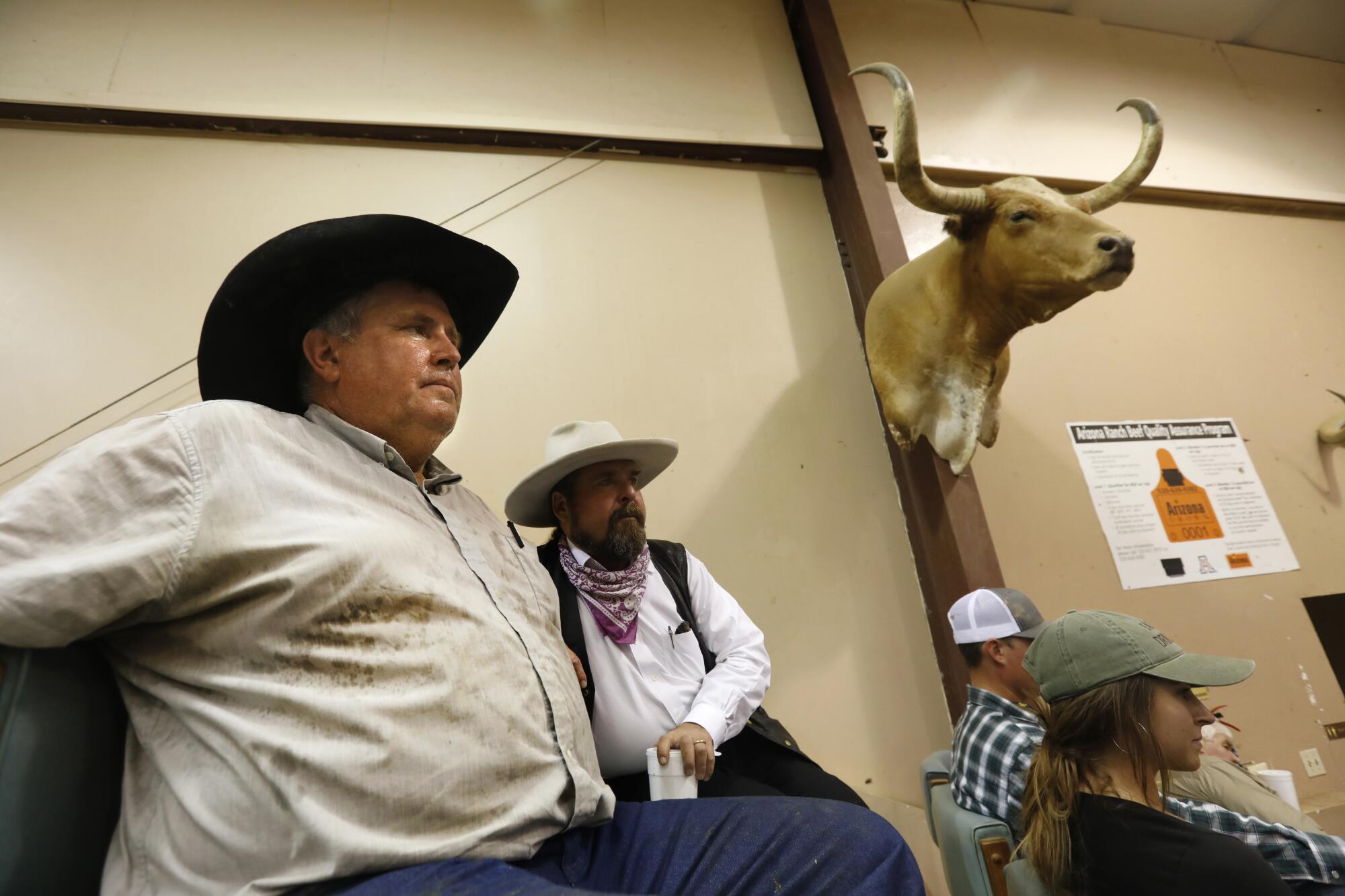
Buck said it costs up to $4 a day per cow for hay, four times more than grazing on grass. The cost of raising beef can be several thousand times more than some vegetables, such as lettuce. But ranchers here said family history — and profits — had until recently seemed worth holding on to.
One of the regulars to come that day was Mike Mercer. At 54, he has been ranching since his teens. For many years, his land in Mammoth, a village of 1,650, provided for 700 mother cows. Now, he can’t have more than 100 at a time as grass disappears.
“You can’t run cattle. It’s just — everything’s gone,” Mercer said. “A lot of guys are switching into copper mining or welding or trucking.”
These days, Mercer buys skinny, sickly cows, feeds them for a few months on hay in a covered feedlot, and resells them at a profit. On that day, he sold 88 to buyers in Texas and Oklahoma.
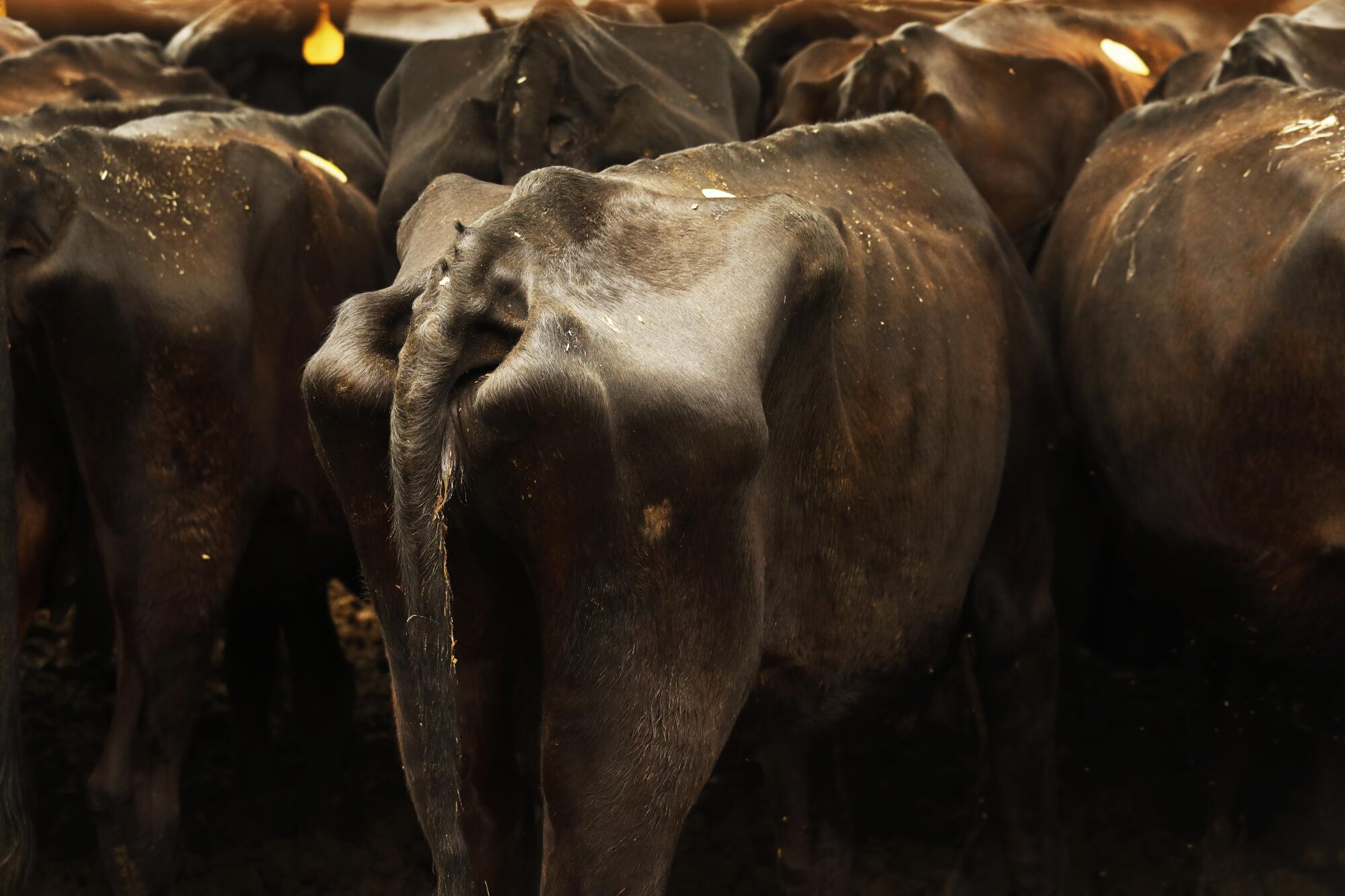
A Christian who believes God is responsible for the drought, he prayed for a change.
“You just keep saying we can’t have another year this bad and then we have another year even worse.... Leave it in God’s hands. Because I don’t know what else to do. You pray for rain. Oh, God, yeah. Pray for rain.”
Caywood, a former farming teacher at the University of California Agricultural and Natural Resources Division in El Centro, Calif., also questions those who say climate change is to blame for her struggles.
“I don’t believe in it. I believe things are cyclical. But I can’t believe that it’s happening so quickly,” said Caywood, who has a master’s degree in agricultural education.
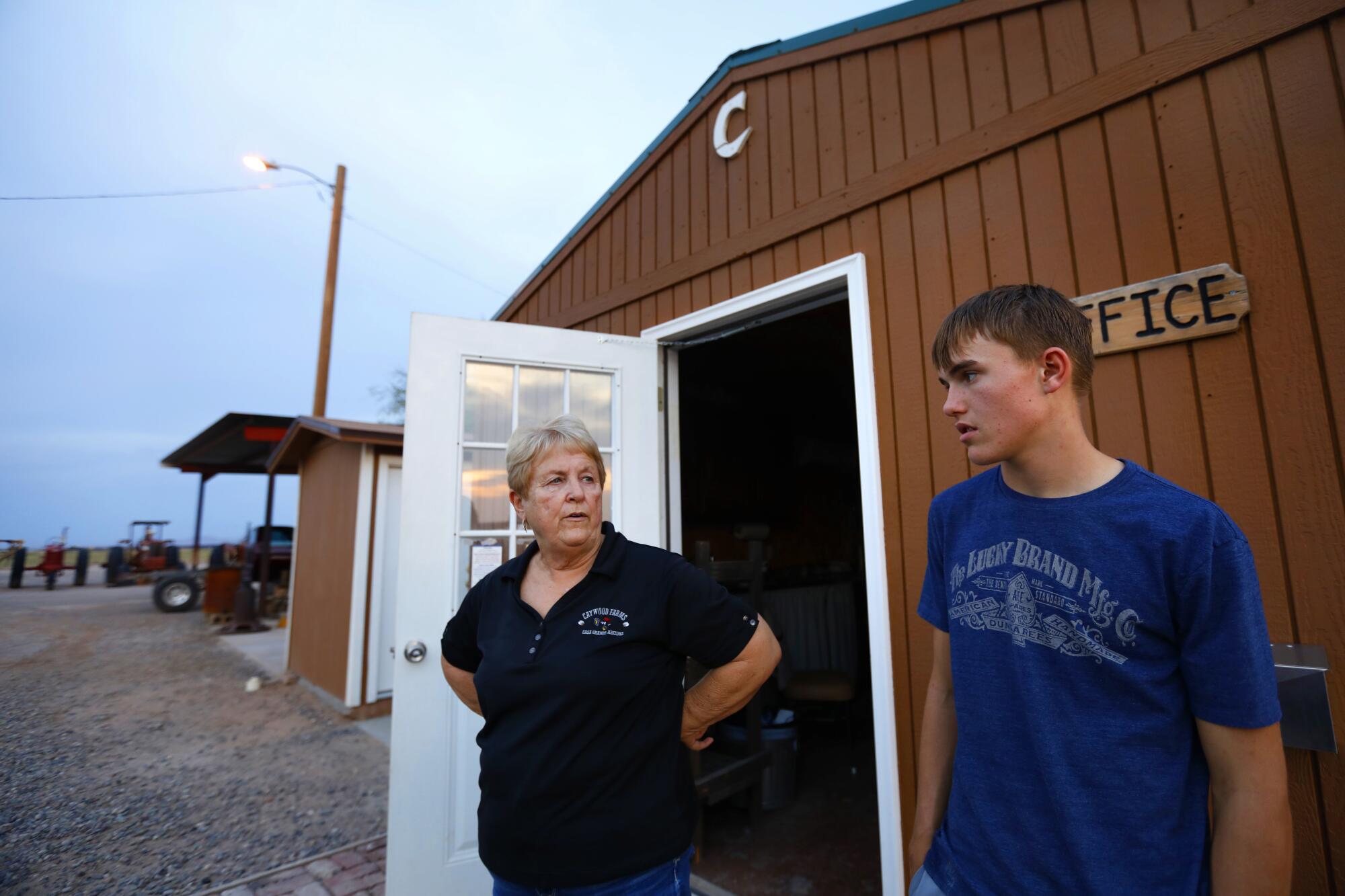
Her son, Travis, built a home on the farm where he lives with two sons. She is thankful that he has continued in the family tradition. But she is more thankful that he is also a firefighter and paramedic, a job that provides a stable income. Her `14-year-old grandson Thomas is learning to farm, raising steer and chickens. She has encouraged them but also told them to consider backup plans.
In the good years, the farm would easily make tens of thousands of dollars in profits, more than enough to cover $22,000 in annual property taxes. This year, Caywood, who had hoped to retire, may dip into savings to cover the bill.
Recently, her son leased two 80-acre plots in different irrigation districts that have access to canal water from the Colorado River. Just a few miles from Caywood Farms, corn stalks reach 5 feet into the air. They’ll be chopped up for dairy cow feed.
The family didn’t want more farming land but found it necessary to cover the taxes on its dying historic property.
Except there’s one problem.
Because of the drought, Arizona will have 18% less water from the Colorado River next year. Farms like Caywood’s son’s will be hit hardest because of rules governing how water is divided in the state.
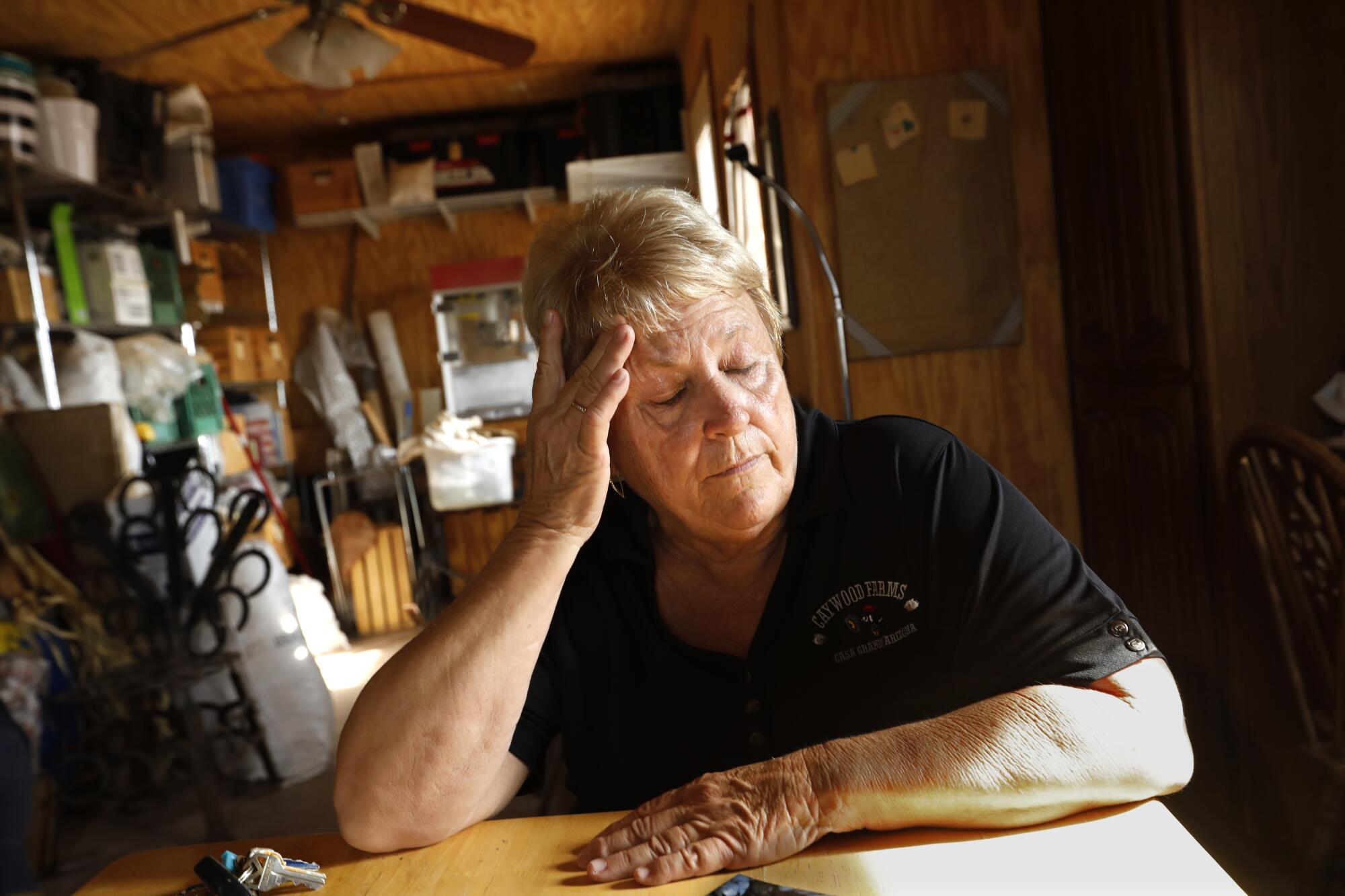
“It seems there’s really no way out of drought,” Caywood said the other week, browsing old photos of her parents and son standing by cotton bales.
Sometimes, she felt as though it wasn’t just a farm but a family and way of life slipping away. Her father, Tommy, died in January at 98. Her 94-year-old mother, Sammie, was in and out of the hospital.
All around her, farms were disappearing. Next door, the Wuertzes sold much of theirs for solar panels. Down the street, an abandoned construction project stood where alfalfa once grew. Caywood had gotten offers from buyers too. She rejected them.
She looked at the barren fields where her grandfather taught her how to examine the changing color of a cotton blossom to tell where the plant was in its life span. She thought back to when water flowed freely in the dried-up irrigation canals where she would sneak away to swim as a kid.
Days like those seemed long gone. She prayed for them to come back again.
More to Read
Sign up for Essential California
The most important California stories and recommendations in your inbox every morning.
You may occasionally receive promotional content from the Los Angeles Times.

